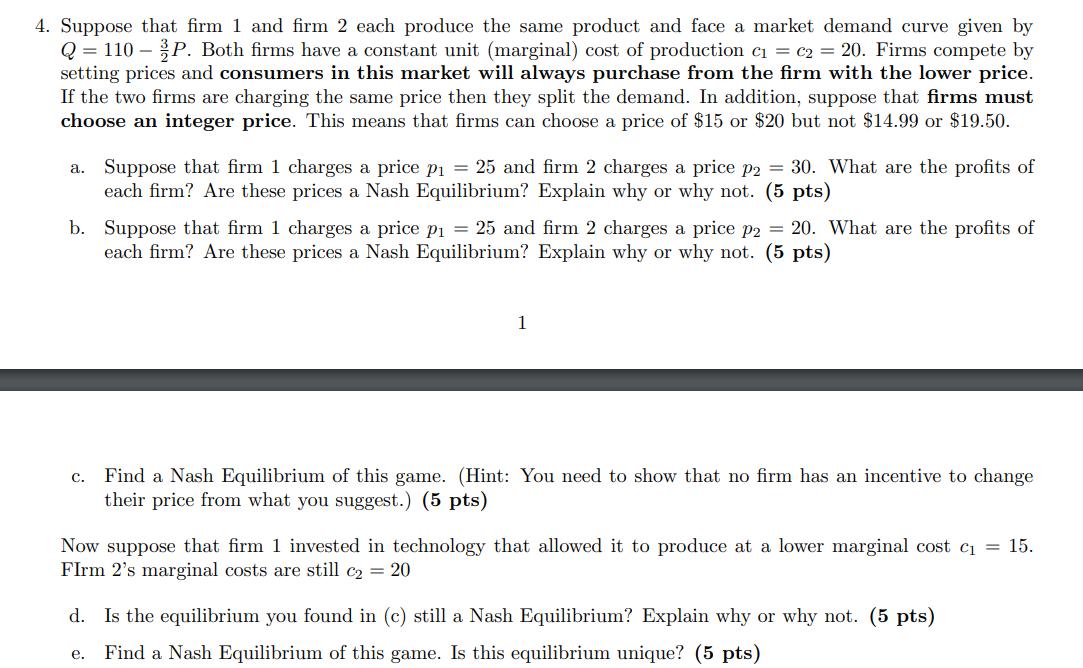Answered step by step
Verified Expert Solution
Question
1 Approved Answer
4. Suppose that firm 1 and firm 2 each produce the same product and face a market demand curve given by Q=110-P. Both firms

4. Suppose that firm 1 and firm 2 each produce the same product and face a market demand curve given by Q=110-P. Both firms have a constant unit (marginal) cost of production c = c2 = 20. Firms compete by setting prices and consumers in this market will always purchase from the firm with the lower price. If the two firms are charging the same price then they split the demand. In addition, suppose that firms must choose an integer price. This means that firms can choose a price of $15 or $20 but not $14.99 or $19.50. a. Suppose that firm 1 charges a price p = 25 and firm 2 charges a price p2 = 30. What are the profits of each firm? Are these prices a Nash Equilibrium? Explain why or why not. (5 pts) b. Suppose that firm 1 charges a price p = 25 and firm 2 charges a price p2 = 20. What are the profits of each firm? Are these prices a Nash Equilibrium? Explain why or why not. (5 pts) 1 C. Find a Nash Equilibrium of this game. (Hint: You need to show that no firm has an incentive to change their price from what you suggest.) (5 pts) Now suppose that firm 1 invested in technology that allowed it to produce at a lower marginal cost c = 15. Firm 2's marginal costs are still c = 20 d. Is the equilibrium you found in (c) still a Nash Equilibrium? Explain why or why not. (5 pts) e. Find a Nash Equilibrium of this game. Is this equilibrium unique? (5 pts)
Step by Step Solution
There are 3 Steps involved in it
Step: 1
a If Firm 1 charges a price of 25 and Firm 2 charges a price of 30 Firm 1s profit 25 20 Q1 5Q1 Firm ...
Get Instant Access to Expert-Tailored Solutions
See step-by-step solutions with expert insights and AI powered tools for academic success
Step: 2

Step: 3

Ace Your Homework with AI
Get the answers you need in no time with our AI-driven, step-by-step assistance
Get Started


